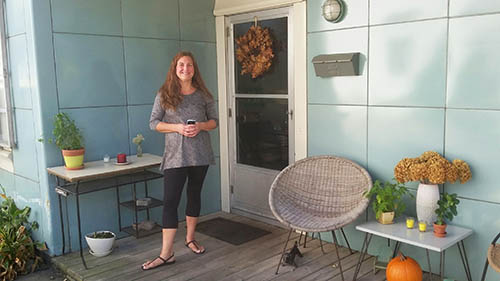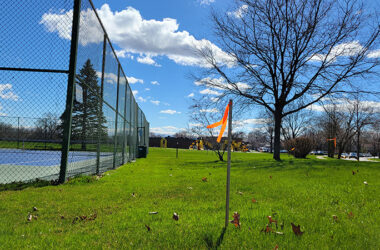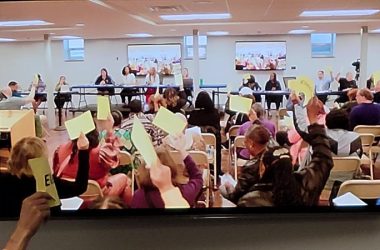Do you know what a Lustron home is? Chances are that most people have never heard the name, nor do they realize there are four of these unique houses located in the village of Homewood.
Lustron home in Homewood. (Photo by Sharon
L. Filkins/H-F Chronicle)
Do you know what a Lustron home is? Chances are that most people have never heard the name, nor do they realize there are four of these unique houses located in the village of Homewood.
A Lunstron home is made entirely of metal: the roof, the walls, the floors and even built-in wall units in the living rooms and bedrooms. Between 1948 and 1950, 2,498 metal homes were built.
The four Lustron homes in Homewood are located at 1401 Linden Road, 18329 Perth Avenue, 18420 Dundee Avenue, and 2158 Ridge Road. All were built in 1950.
Sheila Stoffle, who owns one of the Homewood homes, loves her house and the history behind it.
“I feel like I am a care-taker of the history of these houses. They truly represent what life was like in the early ‘50s and I think that should be preserved,” she said. She has decorated her home with 1950s furniture and artifacts.
The homes were built at the end of World War II when the United States did not have enough housing for the 12 million soldiers returning home. The situation was dire, and President Harry Truman pressured builders to construct affordable housing.
Stepping up to Truman’s challenge was Chicago businessman and inventor Carl Strandlund, who vowed to mass produce houses at the rate of 100 a day. He garnered $37 million in government loans to make good on his promise.
According to information provided by Homewood resident Elaine Egdorf, vice president of the Homewood Historical Society, the steel houses were made like cars on conveyer belts in a former aircraft plant in Columbus, Ohio. Flatbed trucks transported the Lustron panels to 36 states, where they were assembled on concrete slabs using nuts and bolts. Assembly took about two weeks.
The homes were produced with either two or three bedrooms and one bath. Cost of the homes was between $7,000 and $10,000, not including the foundation and the lot.
Stoffle said she participated in a house walk several years ago, opening her home to many visitors.
“People were amazed by the house. The visitors kept telling me they had no idea these houses existed and that there were several right here in the neighborhood.”
Stoffle said the most asked question was, “How do you hang your pictures?”
“I told them we use magnets,” she said. To prove her point she asks any visitor who comes to her house to select a magnet from a jar she keeps by the door. She then instructs them to toss it up to the ceiling, where it immediately attaches to the ceiling.
A lover of antiques, Stoffle has worked hard to keep the original ambience of the home.
“One of the cool things about it is the built-in wall units and closets. When people first bought these homes all they had to buy for the bedrooms were beds. And all the doors are pocket doors which saves a lot of space.” Her two-bedroom home is approximately 1,200 square feet.
She has lived in the house for 27 years and said it is pretty much maintenance free.
“Built in 1950, it still has the original roof. How many people can say that? It doesn’t have to be painted and there is no siding to replace,” she said.
In a presentation to the Homewood Historical Society, Egdorf said that the houses were described by the Lustron company as “The House of Tomorrow” and had a positive reception by the American public.
The company, though, was plagued by a variety of problems, including failure to meet the production goal of 100 houses per day and problems in the sales, finance and construction processes.
It also met with protests from unions, according to Egdorf.
In Chicago, the unions prevented their construction because the assembly of homes at a site did not need carpenters, drywallers, roofers, painters and other tradesmen.
The Lustron Corporation was ultimately forced into bankruptcy and production halted in 1950.
Additional information on the Lustron Homes is available online at www.ohiohistory.org/lustron.




